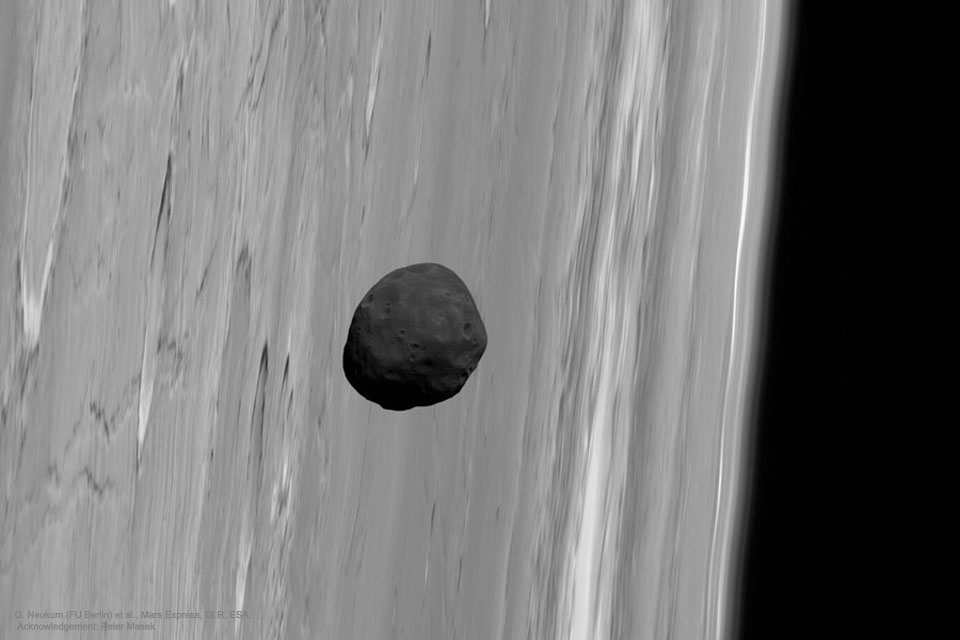2020年11月8日
Martian Moon Phobos from Mars Express
Image Credit: G. Neukum (FU Berlin) et al., Mars Express, DLR, ESA; Acknowledgement: Peter Masek
Explanation: Why is Phobos so dark? Phobos, the largest and innermost of two Martian moons, is the darkest moon in the entire Solar System. Its unusual orbit and color indicate that it may be a captured asteroid composed of a mixture of ice and dark rock. The featured picture of Phobos near the limb of Mars was captured in 2010 by the robot spacecraft Mars Express currently orbiting Mars. Phobos is a heavily cratered and barren moon, with its largest crater located on the far side. From images like this, Phobos has been determined to be covered by perhaps a meter of loose dust. Phobos orbits so close to Mars that from some places it would appear to rise and set twice a day, but from other places it would not be visible at all. Phobos’ orbit around Mars is continually decaying — it will likely break up with pieces crashing to the Martian surface in about 50 million years.
Tomorrow’s picture: in green company
火星快车拍摄的火卫一
影像提供: G. Neukum (FU Berlin) et al., Mars Express, DLR, ESA; 志谢: Peter Masek
说明: 为何火卫一如此黝黑呢?火卫一是火星的两颗卫星中,最大最接近火星的那颗,同时也是整个太阳系最黝黑的卫星。它不寻常的轨道与色泽显示,火卫一可能是被火星掳获、组成混杂冰晶与黑色石头的小行星。这幅火卫一悬在火星临边附近的主题影像,是由目前在绕行火星的火星快车摄于2010年。火卫一是个荒芜满布陨石坑的卫星,它最大的撞击坑位在反面。分析包括此图在内的这类影像,科学家推断火卫一表面可能有一层厚达一米的粉尘。由于火卫一轨道非常靠近火星,因此部分地区一天会看见卫星两次,也有部分地区是从未见过此卫星。火卫一的轨道不停衰减,大约在5千万年内,就会碎裂并撞到火星表面上。
明日的图片: in green company



